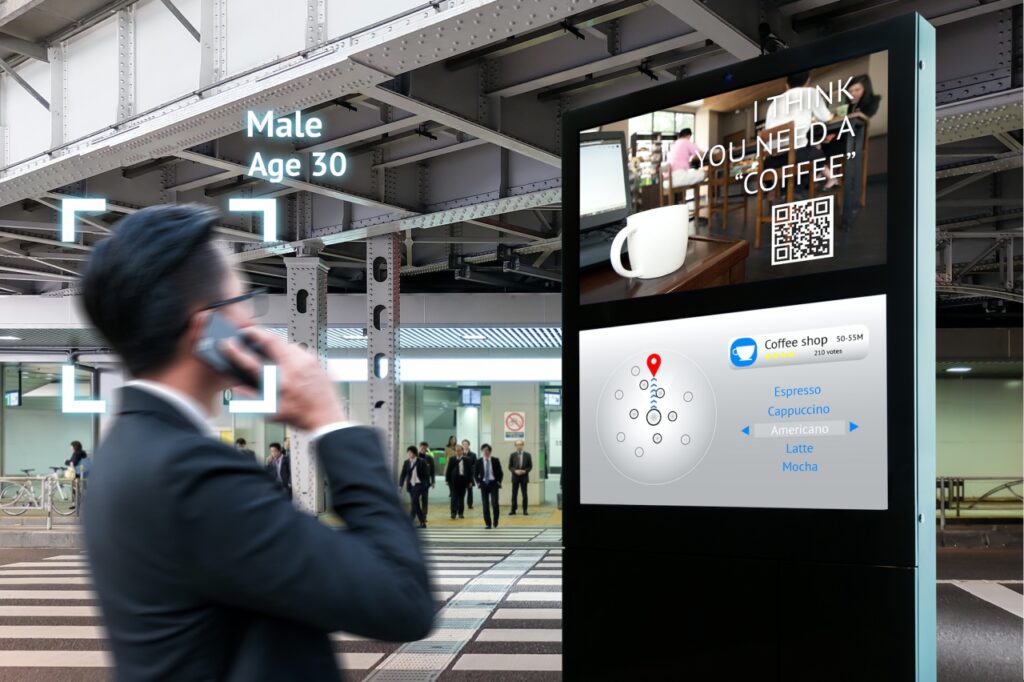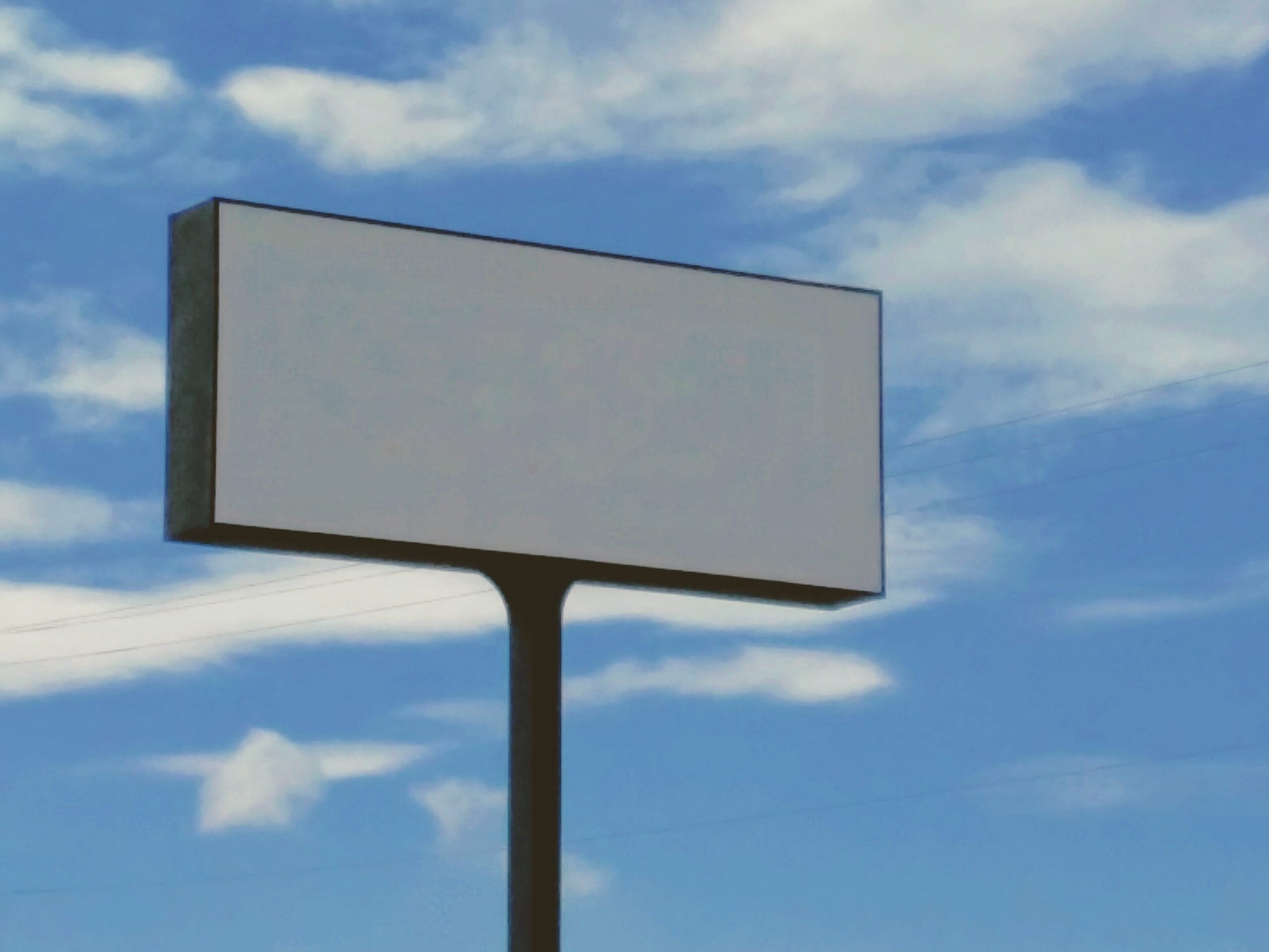Out-of-home advertising (OOH) — also known as outdoor media — is the marketing you see…
Is 2022 the Year of Digital Out-of-Home Advertising?
Why Brands Are Investing in Digital Out-of-Home Advertising
The digital out-of-home advertising arena is, to say the least, a crowded one. From web banners and pop-up ads to sponsored posts on every social news feed, brands and ad agencies must constantly seek out new ways to stay front of mind.
Much like our data, our attention spans have become one of the most sought-after commodities.
As we emerge from our pandemic-era hibernation caves, out-of-home (OOH) advertising options (think billboards, mall posters, bus stop signage, etc.) are making a comeback— with a twist. Why are brands and ad agencies excited about going old school? It’s not exactly 90’s kid nostalgia steering the ship. It’s the allure of what’s possible when OOH advertising meets the digital revolution.

Demand Gen Report, May 2022
What is DOOH Advertising?
A digital ad campaign has many clear benefits over a static image, like a traditional billboard, for example. It’s more cost-effective, for one. It allows for retargeting via cookies, easily customizing a brand campaign based on location, and course correcting content in real-time as audience feedback rolls in.
Digital advertising is nimble and accessible to brands of all sizes.
The flip side of this is having a beautifully crafted creative campaign that gets skipped, blocked, or simply drowned out in a sea of competing online content. In some cases, traditional OOH advertising can stand out more easily. It can feel more experiential to audiences, and it often has the benefit of constant foot traffic in places where it’s hard to ignore or tune out.
When OOH goes digital, the past and future merge, and so do the benefits. Paper billboards and posters become digital screens that cycle through dynamic, responsive content. In the digital realm, multiple advertisers can share a previously locked up space, making DOOH a cost-effective way to reach audiences both nationally and locally.
Digital out-of-home advertising is no fad. As online ad campaigns expand their reach beyond our homes and mobile devices, the global market for DOOH is projected to reach $24.9 billion by 2024.
The Future of Advertising
DOOH opens countless doors to interactive, responsive ad campaigns that can engage audiences in new ways. Take contextual programming, for example. Using real-time data, like the weather report, digital screens can display specific content that relates to a consumer’s current experiences and environment. Rainy day? Stop in for a cozy coffee date!

DOOH technologies make it possible for advertisers to reach audience members with the right content at precisely the right time, but where’s the line? It’s not uncommon to hear folks speculate that our phones are “listening” to our conversations. After all, you were JUST talking about buying a new pillow, and now pillows are following you all around the internet! How will consumers react when those pillow ads start following them around town as well?
In reality, our phones don’t need to listen. Whether we realize it or not, we provide enough data points via our search histories, online behaviors, shopping habits, locations, and those we interact with—or rather, those we are near consistently enough, for our devices to interact with each other—for data collectors to form a robust picture of our behaviors, wants, and needs.
All this info, along with technological advancements like predictive AI, enhanced IoT connectivity, NFC (near field communication), Bluetooth, geofencing, and other emerging technologies, opens up a world of possibilities for interactive DOOH ad campaigns. Content relevant to a specific consumer persona might show up all along a route they are most likely to take on a given day — like an ad campaign that starts at the gas station and shows up again at the grocery store, only to continue during previews at their favorite local cinema on Friday night.
DOOH advertising can target audience members specifically—and relentlessly. So how do we keep things ethical?
Ethics and Climate Considerations
Depending on how a DOOH ad campaign is crafted, the experience can quickly go from new and engaging to something that feels invasive and somewhat dystopian. As our planet struggles toward an uncertain future, climate implications are another crucial component that should weigh heavily into all ethical creative production.
While digital campaigns can be less wasteful than those that rely on paper and printed media, increased energy consumption can quickly negate those benefits. Solutions like solar-powered electronic billboards and digital displays may help take care of this, but implementing DOOH advertising in a planet-friendly, ethical manner is ultimately up to the integrity of those driving advertising decisions.
Partnering with a cutting-edge professional ad agency that puts people and the planet first is essential for brands to ensure they can take advantage of emerging technologies like DOOH advertising and stay front-of-mind without sacrificing their values.
Curmudgeon Group is a women-owned boutique ad agency that partners with brands working toward a climate-resilient future. Contact us today to collaborate and get to know our services here.




